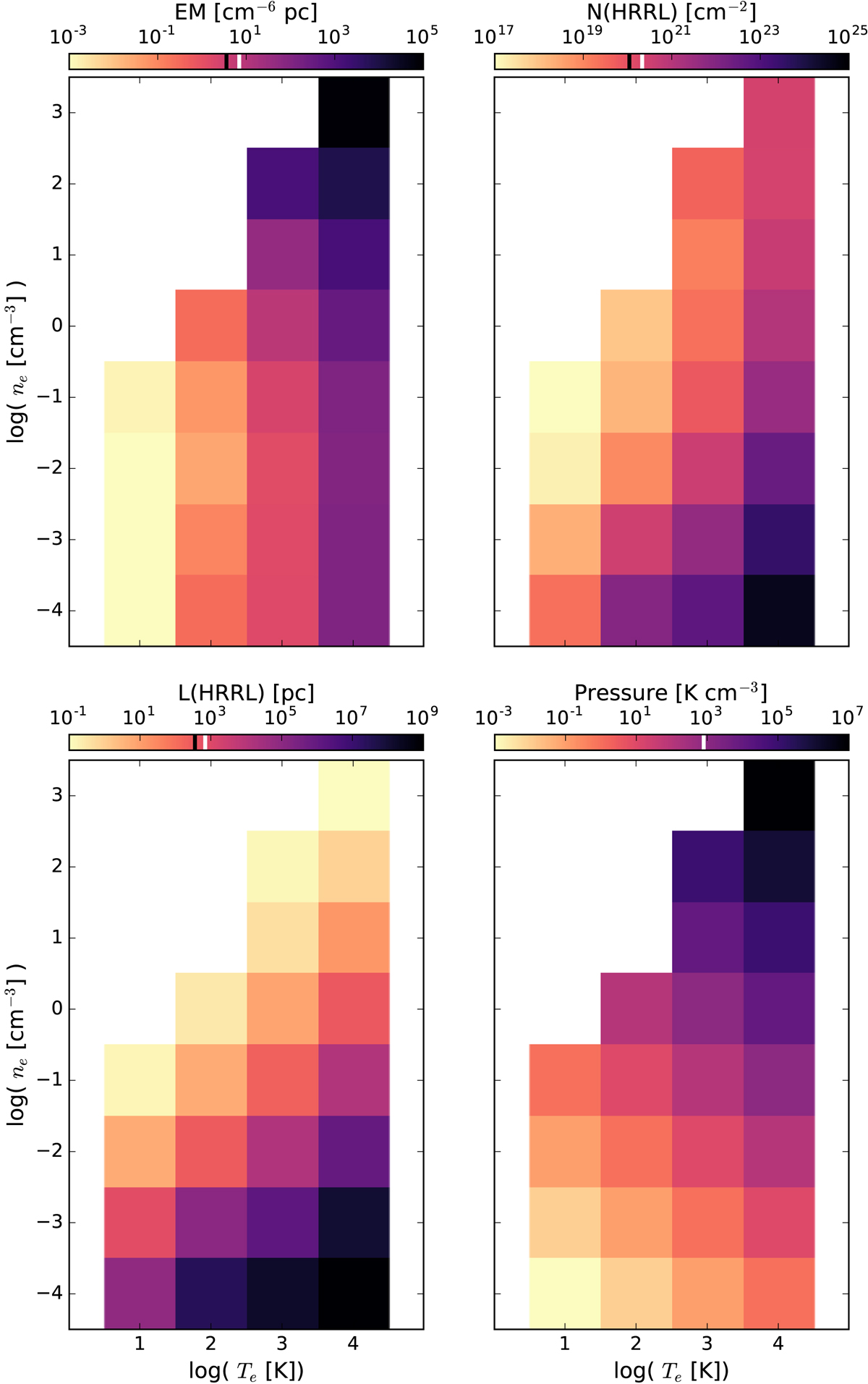Fig. 4.

Derived physical properties from modelling of hydrogen RRL departure coefficients. For input physical conditions, electron density, and temperature, shown on the axes, we computed a departure coefficient (bnβn) via RRL modelling. Plugging in the bnβn, the integrated optical depth, quantum number, ne and Te into Eq. (2), we derive the emission measure (top left panel) and corresponding column density (top right panel) and path length (bottom left panel) of the RRL emission. Additionally we show the electron pressure (bottom right panel). Values representing the warm, ionised phase of a face-on (black) and an edge-on (white) Milky Way are shown with dashes in the colour bars. Hydrogen RRLs are expected to be most prominent from warm, T ∼ 1000 − 10 000 K, gas.
Current usage metrics show cumulative count of Article Views (full-text article views including HTML views, PDF and ePub downloads, according to the available data) and Abstracts Views on Vision4Press platform.
Data correspond to usage on the plateform after 2015. The current usage metrics is available 48-96 hours after online publication and is updated daily on week days.
Initial download of the metrics may take a while.


